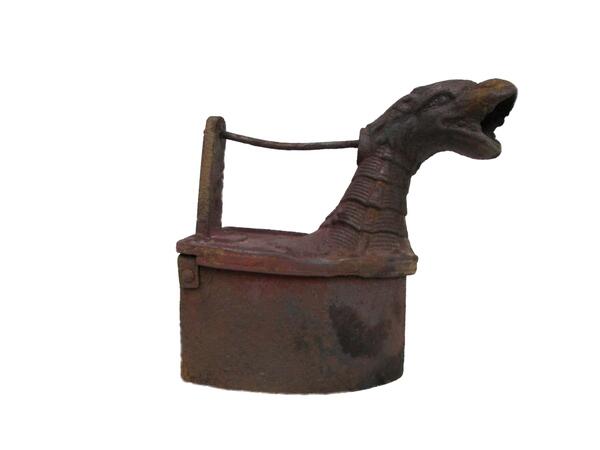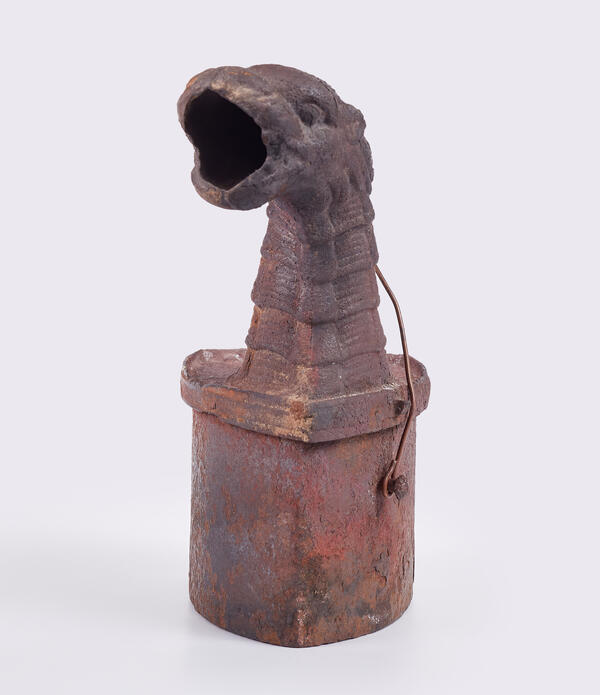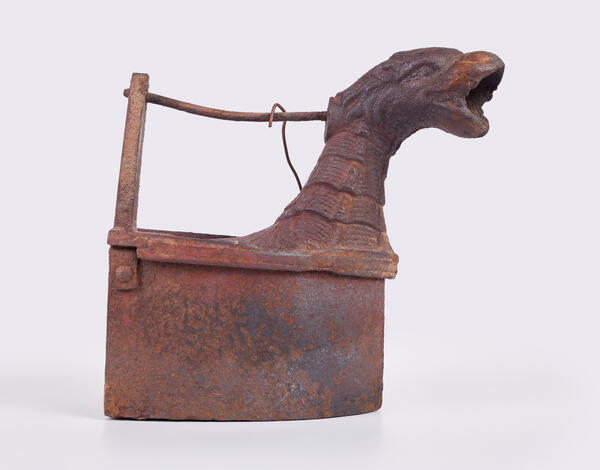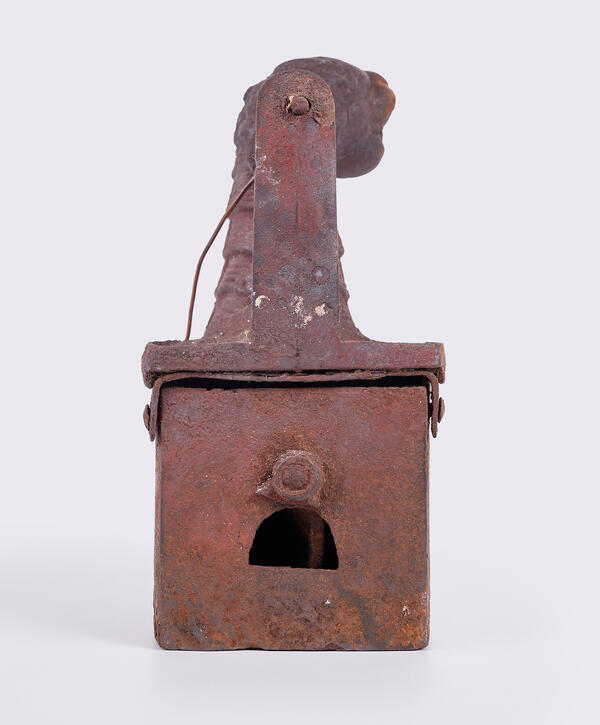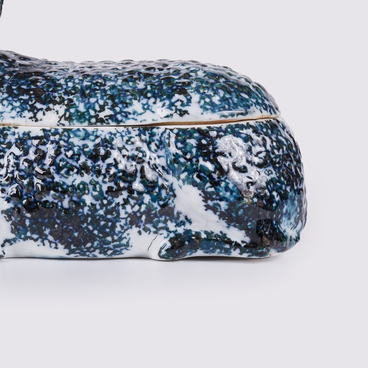The collection of the Zheleznodorozhny Local Lore Museum contains a charcoal iron with a funnel shaped like a dragon’s head made somewhere between the late 19th and early 20th centuries. This exhibit is an improved model of a coal iron.
The first irons were very primitive and most often looked like a solid cast iron block with a handle and a very smooth sole. Such irons took quite a long time to heat up on the stove, about half an hour. A little later, charcoal irons appeared, followed by stove-heated and then electric ones. Irons with a funnel, invented in the early 20th century, were the next stage in the development of charcoal irons. There were irons like this designed for left-handers and right-handers, with the lid locking either to the left or right correspondingly. Of course, the majority of irons were made for right-handers.
Like its predecessors, a charcoal iron with a funnel was heated by hot coals, which were placed in a cast-iron cavity. Simple steam irons had holes on the sides of the body for oxygen, and they could be swung to and fro to revive the charcoal. At the same time, sparks and small coals often flew out of the side grooves, which left holes and scorches on the clothes. In irons with a funnel, the air passed through a blower with a cover, and the smoke was discharged through a funnel shaped like a dragon’s head on a long neck. The iron works on the principle of a Russian stove: a draft is formed thanks to two holes, and the coals light up on their own without any additional effort.
Irons with a funnel shaped like the head of a mythical creature, such as a dragon, were made in Germany in the 19th and early 20th centuries. An iron was more than just a household item: it was very expensive, so it often occupied pride of place and was passed down as an heirloom.
The Great Patriotic War changed the development of
scientific and technological progress, but even after it, not every Russian
home had electrical outlets and not everyone could afford an electric iron.
Therefore, it can be safely said that cast iron appliances remained in active
use until the 1960s.

